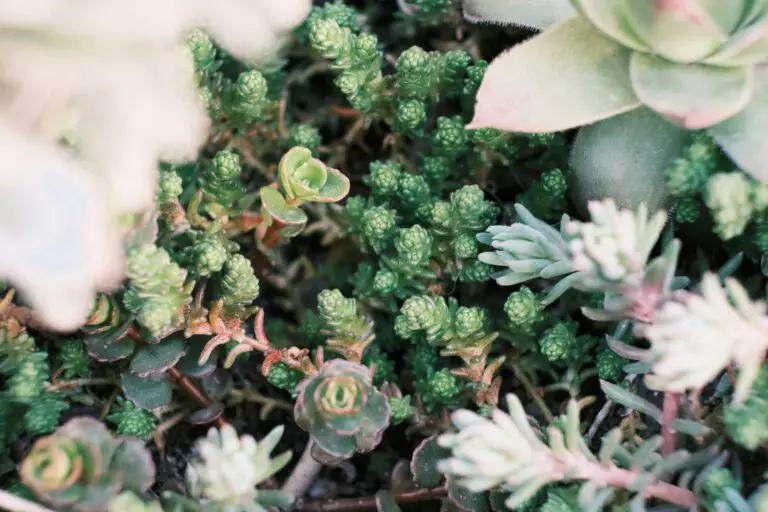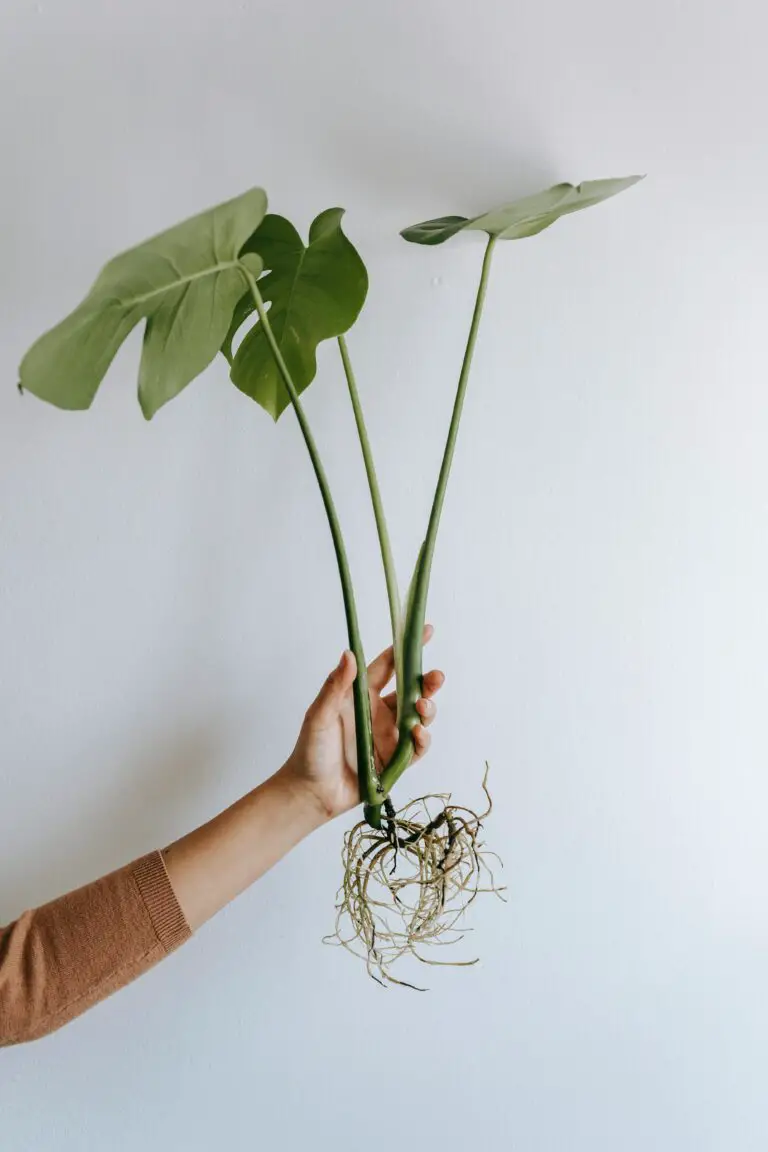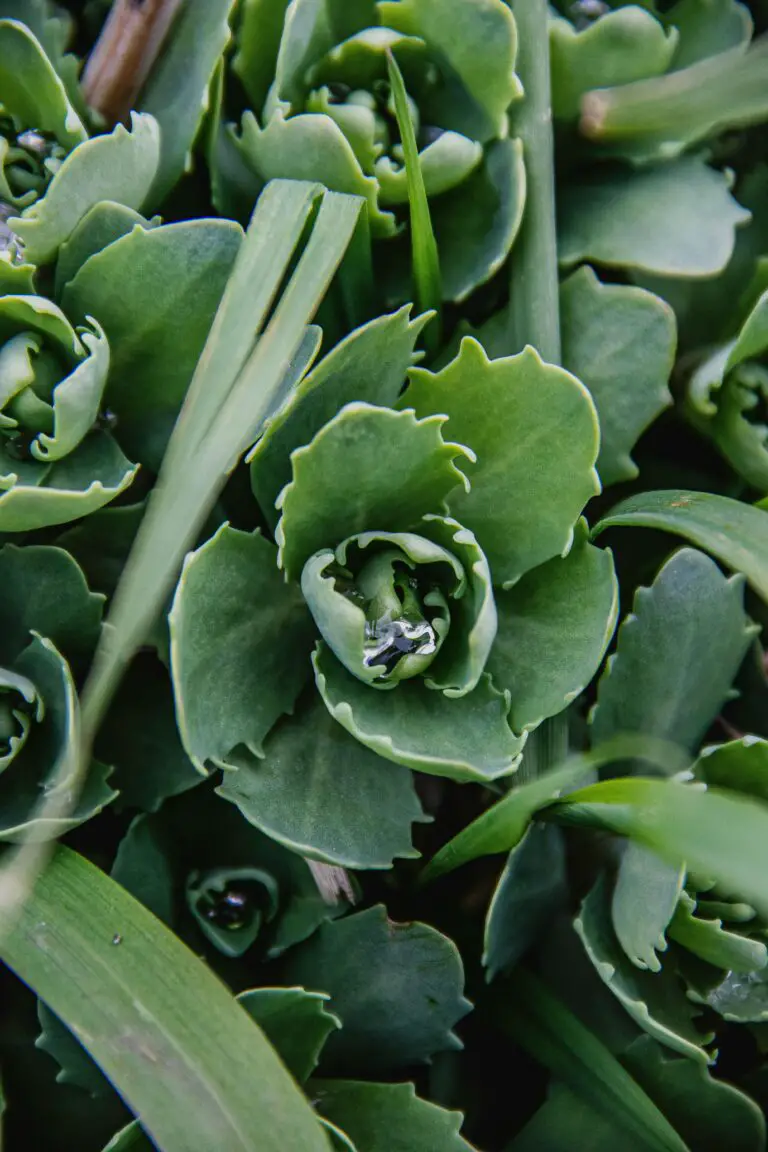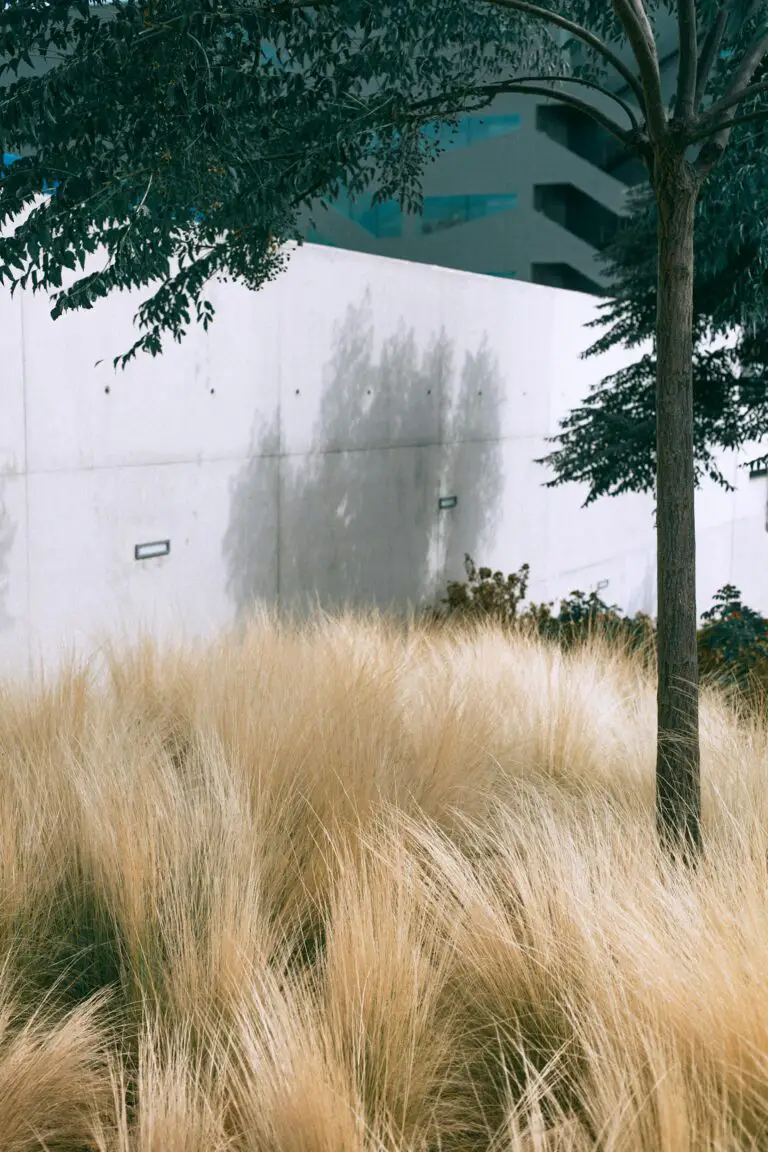Introduction to Sedum Division
Imagine your once vibrant sedum, now sprawling messily over its once-defined boundaries, its lush greens turning into a dull, overcrowded palette. It’s a common sight for garden enthusiasts—but fear not! The secret to reviving that tired sedum lies in the art of division. By understanding when to divide your plant, you can unlock the pathway to maintaining sedum’s health and ensuring that your garden remains a stunning mosaic of color and life.
It’s a simple gardening task, yet it holds the power to transform your sedum—a routine akin to giving your garden a refreshing spring clean. Imagine the joy of seeing your sedum rejuvenate, as you spread the wealth of its beauty throughout your garden or share it with friends. Much like a cherished recipe passed down through generations, the division of sedum can create a lineage of flourishing growth, expanding the legacy of your green haven.
Dividing your sedum isn’t just about aesthetics, though. This little horticultural maneuver is a cornerstone for healthy plant growth. If you’ve noticed your sedum growing less vigorously, or perhaps it’s begun to flower less plentifully, it might be sending you an SOS to thin out its crowded living quarters. Division helps to ensure each segment has its own space to soak up nutrients, unfurl its roots, and catch the sun’s rays—essential ingredients for a luscious, vibrant sedum.

While the thought of taking a knife to your beloved sedum may seem daunting, rest assured that it’s not only safe but beneficial. Seasons cycle and plants grow; division is the natural next chapter in your sedum’s story. For an in-depth guide on the division process, including a step-by-step walkthrough, visit wikiHow’s comprehensive guide on how to divide sedum.
As we delve deeper into the world of sedum division within this article, remember that the best time to perform this task is a critical factor to achieve the lush growth you desire. And as you become more accustomed to this practice, you’ll not only see your sedum thrive but feel like a true steward of nature’s ever-evolving canvas.
Understanding Sedum’s Growth Habits
Imagine strolling through your garden, marveling at the lush, fleshy foliage of your Sedum plants. These hardy succulents are a gardener’s dream, boasting an ability to thrive with minimal fuss. Part of their charm lies in their unique growth habits, which, if understood, can lead to a thriving spectacle in your personal green space.
As your Sedum plants mature, they signal when it’s time for a bit of garden intervention. Expert gardeners agree that division rejuvenates these plants, encouraging more vigorous growth. But when exactly should you intervene with your gardening shears? Sedum plants often tell their own story, with visual cues that beckon the attentive gardener to take action.

Look for signs such as overcrowding, where individual rosettes struggle for space, or a center that starts to die back while the perimeter bustles with life. Such scenes are your cue; it’s division time! This simple act can turn a single plant into a haven for pollinators across your garden beds. For more insights on plant care, explore Sedum Whisperer: Articulating Care for Succulent Enthusiasts, an enlightening resource on the art of nurturing these resilient beauties.
Recognition of Sedum’s growth patterns and division signals ensures that each clump can be split and spread to adorn different corners of your outdoor sanctuary. So next time you’re out, take a closer look. Your Sedum may be whispering its need for space and the promise of lush growth.
Optimal Timing for Sedum Division
Sedum plants, those succulent stars of the garden, evoke glee among gardeners when they start to outgrow their spaces. It’s like they’re waving little green flags saying, “It’s time for a change!” And that change often means division—a garden task that gives you more of these hardy beauties and rejuvenates your existing plants. But the million-dollar question that lingers in every gardener’s mind is, “When is the perfect time to divide my sedum collection?” Let’s dive into the when and witness the splendor of properly timed sedum splits.
Imagine you’ve got a clump of ‘Autumn Joy’ sedum so big it’s starting to encroach on the sidewalk, its vigorous growth a sight to behold. You’ve admired your plant’s progression from a tiny rosette to a kaleidoscope of butterflies hovering over cherry-topped flowers. This living spectacle serves as your very own calendar, pointing towards the optimal division times. Spring and early fall are the golden intervals for sedum division, precisely tailored to the plant’s growth cycles and your regional climate.
Consider spring division as the gardening world’s Black Friday—it’s a bustling time filled with opportunity! When the sedum’s new growth is about 2-4 inches high, that’s your cue to take action. This period of active growth ensures that the divisions will establish themselves quickly, basking in the delight of the mild temperatures and spring showers. Meanwhile, planning division for early fall—think late August to early September—plays into the hands of sedum’s preparation for winter dormancy, allowing divisions to settle in without the stress of blooming or extreme heat.
Now, how do you assess the local climate’s impact on this process? If you live in a region with harsh winters, timing your sedum division in spring gives your plants a full growing season to root deeply. In contrast, warmer climates might grant the flexibility of a fall division, giving your sedums a cozy settling period before they burst with life come spring. A comprehensive guide on caring for sedum plants can provide further context and month-by-month advice to help you harmonize your garden activities with the rhythm of the seasons.
Feast your eyes on the splendor of a thriving sedum, its leaves catching the glow of the rising sun. Harmonizing division times with your sedum’s growth and regional climate demands will not only enhance your garden’s dynamism but also inspire a ballet of buzzing bees and flitting butterflies. All thanks to the lush growth spurred by timely division—true horticultural poetry in motion.

Step-by-Step Guide to Dividing Sedum
Ready to give your sedum a fresh start? Dividing sedum isn’t just about plant multiplication—it’s an epic journey of rejuvenation and growth. But fear not, green-thumbed adventurers! This guide is like the trusty map you need to navigate the twists and turns of sedum division.
Gather Your Tools: Prep Like a Pro
Before we embark on our green expedition, let’s talk gear. You wouldn’t climb a mountain without the right equipment, right? Same goes for diving into your garden. You’ll need a sharp knife or spade, gloves to defend against sneaky soil-dwellers, and a sense of botanical bravery. Optional but recommended: a cap to shield you from the realm of relentless sunrays.
The Sweet Spot: Timing Is Everything
When is the perfect moment to split your sedum’s serene existence, you ask? Early spring or late summer is your window. Why? Imagine you’re giving your plant a pep-talk before a big event—they need time to get ready. Spring’s milder temperatures and healing rains are like a nurturing spa for newly divided sedums. In the fall, cooler weather comes to the rescue, giving your plants the chill vibes they need to root without getting a sunburn.
Ready, Set, Divide!
It’s game time! You’ll first identify your sedum’s base camp. Where do those stems look the most crowded, as if they’re throwing an underground plant party? That’s your target. Delicately lifting the plant with your spade or hands, envision you’re a skilled treasure hunter uncovering buried gems. Once out, use your sharp tool to slice through the root ball like a hot knife through butter—well, maybe with a bit more effort.
With each division, you’re essentially creating a clone army of sedums, poised to conquer more of your garden space with luscious growth. Plant them in well-draining soil and remember: these tough little troopers prefer the high ground. Elevation helps prevent water-logged roots, keeping your sedum’s feet dry and cozy.
For a visual walkthrough of the sedum division process, check out this helpful tutorial:
While you’re elbow-deep in garden soil, don’t forget to consider the overall well-being of your sedum. If you’re curious about how to keep your plants thriving beyond the division process, take a look here for some top-notch care tips that go beyond the usual “water and sun” mantra.
There you have it! A step-by-step guide that’ll make dividing your sedum feel like a rewarding quest rather than a daunting chore. Your garden will thank you with an explosion of growth and beauty that’s sure to turn heads—maybe even those of the neighborhood hummingbirds and bees!
Aftercare for Divided Sedum Plants
Congratulations on successfully dividing your sedum! Now, let’s talk about how to pamper those split sedum babies so they can flourish in their new homes. Imagine handling a tender, young sprout that’s just been teased apart from its siblings—it’s a bit shaky at first, but with the right TLC, it’s destined for a growth spurt.
First things first: hydration. Your new sedum divisions are like joggers after a marathon—they’re thirsty! Water them gently but thoroughly, as overzealous streams can disturb their fresh footing. It’s like giving a parched friend a steady stream of water instead of abruptly tossing a bucket over them. They need time to drink up at their own pace.
Next up: the perfect soil bed. Sedum plants aren’t fussy, but they do like their space to be well-drained and nutrient-rich. Think of it as crafting the ideal mattress—soft yet supportive. It’s all about creating a comfy environment where roots can stretch out without getting waterlogged. So, mix in some organic matter or compost, like a chef seasoning a gourmet dish, ensuring your sedum’s growth is nothing short of delicious.

Lastly, location is key. Just like a beachgoer finding the perfect spot of sand, your sedums need a sunny locale with a bit of afternoon shade, if possible. This is their happy place, where they can soak up the sun’s rays without getting a sunburn. Finding them the right spot is like scouting prime real estate—it’s all about the location, location, location!
Remember, the first few weeks are crucial for your divided sedum. Keep an eye on them as if they’re young saplings, vulnerable but eager to grow. With these aftercare tips in practice, you’re setting the stage for a lush, vibrant sedum display that’ll have passersby stopping to marvel. It’s a green thumbs-up from Mother Nature!
Common Mistakes to Avoid When Dividing Sedum
Welcome to the nitty-gritty on the dos and don’ts of sedum division! Splitting your sedum may seem like a no-brainer, but even the greenest thumbs have tripped over these pitfalls. Let’s dig into what not to do so your sedums can flourish without a hitch.
Choosing the Wrong Time for Division
Timing is everything! Remember, the best time to divide sedum is in early spring or late summer/early fall. Why then, you may wonder? Because these resilient plants are in their active growing seasons… or just winding down. Think avoiding the heat of high summer or the frosty sleep of winter. Splitting sedums out of season is like waking up a hibernating bear—just not a good plan!
Overlooking the Mother Plant’s Health
Before you even think about propagation, give the mother plant a thorough check-up. Does it seem vibrant and healthy? Or are there signs of distress, like discolored leaves or stunted growth? Trying to divide a struggling plant is akin to running a marathon with a sprained ankle – you’re setting it up for failure before you even start!
Neglecting Root Inspection
Got your garden gloves on? Great, because it’s time for some root reconnaissance! When you’re separating your sedum, inspect those roots carefully. Avoid tearing them recklessly as if you’re opening a bag of chips during movie night. We’re aiming for minimal root trauma here, folks. Gently tease them apart, preserving as many as possible, for both the offspring and the parent plant.
Incorrect Soil Prep
Imagine this: You’ve divided your sedum, and now you’re ready to replant. But wait! Is your soil ready for the spotlight? Make sure the new home for your sedum division drains quicker than a sink with no stopper. Succulents despise soggy feet, and a waterlogged soil is basically a waiting room for root rot. A blend of soil and grit is the five-star accommodation they’re looking for. Anything less? Well, you’re skimping on their comfort!
Last but not least, let’s talk water. Post-division, your sedums need a drink, but not a flood. Think of it like a spa day; a little hydration goes a long way. Over-watering can lead to shock, or worse, those dreaded rots. A gentle sprinkle to quench their thirst is all they need to settle into their new homes.

Now that we’ve covered some key don’ts, you’re equipped to avoid these common division blunders. Keep these tips in mind, and you’ll be on the path to prolific sedum propagation in no time. Here’s to all the lush growth that awaits your garden!
Propagating Sedum: Beyond Division
While division is a common technique to multiply your cherished sedum plants, the horizons of propagation extend far beyond. Let’s delve into some other methods that might just make your sedum garden the envy of the neighborhood.
Cuttings: A Snip Away from New Growth
Have you ever admired a lush, full sedum and wished you could simply copy and paste it throughout your garden? That’s where cuttings come into play. Remember that friend who cut a single strand from her flourishing sedum and magically grew a new plant? She knew the power of cuttings – a simple snip of a stem, leaf, or even a flower head can be the start of a new sedum life. And the beauty is, it’s nearly as straightforward as it sounds.
When selecting parts for cuttings, aim for healthy, vibrant sections. Lay them out to dry for a day or two – this step is critical to avoid rotting when planted. Once they’ve healed over, nestle them into a well-draining soil mix, and just wait for the magic to take root! And remember, a spritz of water now and then is all the encouragement they’ll need.
Seeds: Cultivating Sedum from Scratch
Fancy starting from the very beginning? Seeds offer the ultimate journey from embryonic speck to fully-fledged plant. For those patient enough to tread this path, the rewards can be deeply satisfying. Imagine scattering tiny seeds onto the soil, like stars across the night sky, and watching life take hold. It’s a masterclass in patience, but when your sedums finally unfurl their first true leaves, the triumph is all yours.
Begin with a shallow tray or pot filled with a mix of sand, perlite, and soil. Scatter the seeds on the surface—no need to bury them, as light aids germination. Keep them moist (but not waterlogged!) and within the cozy warmth of your home or greenhouse until they declare themselves ready for the outside world. Then, watch as you cultivate a diverse tapestry of sedum varieties, each with its unique charm.
And there you have it – cuttings and seeds, your allies in creating a sedum sanctuary that’s as robust as it is resplendent. So grab your garden shears, your trowel, and a bit of that intrepid gardener’s spirit – it’s time to propagate your way to a verdant victory.

Incorporating Divided Sedum into Garden Design
Embarking on the exciting journey of dividing your sedum plants opens the door to a world of garden design opportunities. It’s like being an artist with a fresh canvas, where each divided piece serves as a brushstroke in creating your living masterpiece. Picture this: a once sparse flower bed transforming into a lush mosaic of textures and colors, all thanks to the careful and strategic placement of divided sedum plants.
Envision the newly divided sedum ‘paint swatches’ nestled snugly against a backdrop of waving ornamental grasses, their fleshy leaves and stout blooms casting a visual anchor in a sea of feathery foliage. Or perhaps, consider the visual drama of sedum divisions marching along a stone pathway, guiding your steps with their resilient and artful presence. They’re not just plants; they’re your garden’s sentinels, allies in your design vision.
Let’s not overlook the ecological symphony that sedum brings to the table. Dividing and planting sedum cultivates a refuge for pollinators. As you mix and match companion plants, imagine the buzz of bees and the flutter of butterflies adding motion to your garden tableau. Sedum doesn’t just provide aesthetic pleasure; it becomes a cornerstone of an environmentally supportive domain. Marigolds, coneflowers, and lavender are just a few companions that not only enhance this vision but also contribute to a thriving ecosystem.
Integration is key. Thoughtfully placing divided sedum within the embrace of a rock garden, for instance, can add a sense of permanence and timelessness. The sedum’s succulent leaves juxtaposed against the rugged texture of the rocks create a visual and tactile contrast that’s both stimulating and serene. Imagine a sun-drenched corner of the garden where sedum takes center stage, charming all with its low-maintenance grace and year-round interest.
Sedum’s versatility is unmatched, suited for borders, edging, or even spilling from containers with playful abandon. These plants ask for so little yet give so much, making them the perfect candidates to revitalize overlooked corners or enhance established garden motifs. With divided sedum, you hold the power to weave a tapestry of living shades and shapes, transforming your garden into a sanctuary of verdant splendor.

Frequently Asked Questions
Welcome to our green-thumb gathering spot, where we dive into the dirt and unfold the secrets of dividing your sedum. Let’s unravel the tangles of questions with some straightforward, root-to-tip advice for all our fellow plant whisperers. So, don those gardening gloves, and let’s get to the root of your sedum division curiosities!
When is the Prime Time to Divide Sedum?
Timing is everything in the life of a plant, and for sedum, it’s no different. Imagine trying to craft the perfect split—only during a certain time of year can you truly succeed. The magic window? Late winter to early spring. That’s right before your sedum’s growth resumes, avoiding the summer’s scorch and giving your transplants time to establish. Plus, an autumn encore is possible, once the heat retreats and before the first frost. It’s like catching your favorite song on the radio at just the right moment—it thrives!

How Should You Care for Newly Divided Sedum?
Care for your newly divided sedum like it’s a fresh start—because it is! Begin by choosing a worthy stage with rich, well-draining soil and a sunny spotlight. Water them deeply, but don’t let them swim in moisture; think of it as a balanced diet of hydration. Then, just be patient. The first few acts might be slow, but when the curtain rises on new growth, you’ll know your backstage efforts were well worth it.
Troubleshooting Common Sedum Division Issues
Even the best-plotted plans in the garden can hit a bit of a snag. If your sedum looks sadder than a wilted bouquet after division, don’t panic! First, assess the situation. Are the leaves yellowing? It might be too much love in the water department. Sparse growth? Perhaps they’re craving more sunshine, like a beachgoer on a cloudy day. Address the issue with a minor tweak here or there, and soon enough, your sedums will be strutting their stuff again.
Dividing your sedum shouldn’t be a thorn in your side. With a dash of know-how and a sprinkle of care, you’ll have lush, thriving plants that make every passerby (and pollinator!) pause and admire. So, grab your spade, embrace the challenge, and let’s help those sedums enjoy a growth spurt!



